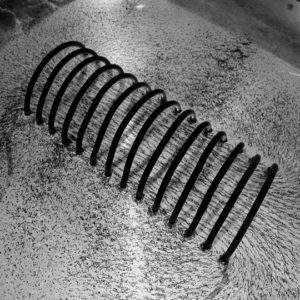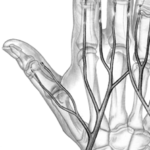







Ultimate Implant Bundle
The Ultimate Implant Bundle has you covered with 4 different technologies packaged into 3 chip implants. Our NExT and xMagic products package two very popular chips inside a single implant. The VivoKey Spark 2 is the world’s only cryptobionic upgrade, linking you to the VivoKey service and other VivoKey community members.
- NExT – NTAG216 13.56MHz NFC Type 2 ISO14443A RFID
- NExT/xMagic – T5577 125kHz Chip Emulator
- xMagic – 13.56MHz “Magic” gen2 Mifare 1k Emulator
- Spark 2 – 13.56MHz NFC Type 4 ISO14443A RFID
- Also includes tons of accessories!!!
$279.99
More Details
WARNING This kit definitely contains dangerous things. While the chip implants included in this kit have undergone several quality checks during manufacture and has been put through a battery of tests, it has not been certified by any government regulatory agency for implantation or use inside the human body. Use of the devices in this kit are strictly at your own risk.
Ultimate Implant Bundle
- *1 sterile injector assembly, pre-loaded with a NExT dual chip implant
- *1 sterile injector assembly, pre-loaded with an xMagic chip implant (Magic MIFARE gen2)
- *1 sterile injector assembly, pre-loaded with a VivoKey Spark 2 chip implant
- 6 single use ChloraPrep antiseptic wipes
- 3 sterile gauze pads for post-injection wound care
- 3 sterile expandable-fabric adhesive bandage
- 3 pair of non-sterile, non-latex procedure gloves
*All chip implants are tested for function before loading into the injector assemblies, and the whole injector assembly with chip inside is EO gas sterilized.
NExT Chip Implant
The NExT is a 2mm x 14mm cylindrical chip implant encapsulated with robust Schott 8625 biocomaptible soda-lime glass. The NExT includes two chip types inside a single implant! It contains both a 13.56MHz NTAG216 NFC chip and a 125kHz T5577 RFID chip. The NTAG216 NFC chip inside the NExT works with NFC capable smartphones, certain commercial access control systems and door locks, and USB contactless ISO14443A readers. The T5577 RFID chip inside the NExT is a 125kHz emulator that can be programmed to behave like many different types of common 125kHz low frequency chips, including EM41xx, EM4200, HID 1326 ProxCard II, HID 1346 ProxCard III, Indala (and more!) access cards and keyfobs. Check out our video explaining how the T5577 works.
xMagic Chip Implant
The xMagic is a 3mm x 15mm cylindrical chip implant encapsulated with robust Schott 8625 biocomaptible soda-lime glass. It also includes two chip types inside a single implant! It contains both a 13.56MHz “Magic” Mifare S50 Classic 1k gen2 chip and a 125kHz T5577 RFID chip. The Mifare NFC chip inside the xMagic works with Mifare 1k Classic systems that do everything from access control to stored value cards, and even making localized payments within closed systems like public transit and laundry services. The T5577 RFID chip inside the NExT is a 125kHz emulator that can be programmed to behave like many different types of common 125kHz low frequency chips, including EM41xx, EM4200, HID 1326 ProxCard II, HID 1346 ProxCard III, Indala (and more!) access cards and keyfobs. Check out our video explaining how the T5577 works.
Spark 2 Chip Implant
The VivoKey Spark 2 is a 2mm x 14mm cylindrical chip implant encapsulated with robust Schott 8625 biocomaptible soda-lime glass. The Spark 2 is a product designed and manufactured by VivoKey Technologies, makers of the only cryptobionic implants capable of performing strong cryptographic functions in vivo. The Spark is a 13.56MHz ISO14443A and NFC Type 4 compliant, readable by all NFC reader devices including all NFC capable smartphones and USB readers that are capable of reading ISO14443A chips. The Spark is plug and play! There is nothing to program, and it is cryptographically secure. It works with the VivoKey app to configure scan behavior and expand your capabilities.
Unlike other NFC implants, the VivoKey Spark 2 is not a simple NFC chip, it is a secure link to the future. With the Spark, you aren’t just upgrading yourself, you are becoming part of the most advanced cryptobionic community in the world and your new digital capabilities will keep expanding as the VivoKey platform grows. Welcome to the future.
Check here for more information on the Spark 2 and how it fits into the VivoKey ecosystem.
Bundle Extras
The Ultimate kit includes some additional goodies!
- xEM Access Controller
- KBR1 Wedge Keyboard Reader
The T5577 chip inside the NExT and xMagic implants come pre-programmed in EM4102 emulation mode. That makes it compatible with with our xEM Access Controller, which enables you to quickly build a simple access control project to open your room, house, or garage door with a wave of your hand.. or with a little more tinkering, unlock your car or even start your motorcycle ! Also included in this bundle is our KBR1 keyboard wedge reader , which acts as a USB keyboard that “types out” the UID or “serial number” of both the xMagic’s Mifare 1k chip or the NExT’s NTAG216 chip, enabling a simple computer logon solution .
Field Detection Accessories
It can be tricky getting used to using your new upgrades. The small size and cylindrical antenna shape of these types of chip implants means getting them to read with standard readers or smartphones with NFC can take some getting used to. To help you discover the best way to get a read with whatever reader you’re trying to use your new implant with, every bundle comes with a collection of field detection accessories.
- 125kHz X Field Detector
- 13.56MHz X Field Detector
- RFID Diagnostic Card
The X Field Detectors (XFD) are designed to operate just like chip implants, only instead of a chip they have an LED inside which will light up when you have found the correct location and orientation in which to present your chip implant to the reader. The RFID Diagnostic Card is a handy tool to keep in a wallet, and will tell you all about the frequency and duty cycles any readers you encounter in the wild.
Important Things To Know
Please expand the sections below to read up on things like performance expectations, return policy, installation procedure, etc.

 Passive RFID and NFC chips are magnetically coupled devices that power themselves and communicate data over a shared magnetic field the reader generates. This means their effective read range and performance depends entirely on how well the antenna coils of both the chip and reader couple with each other. This typically means the shape, size, and orientation of both antennas must be complimentary.
Passive RFID and NFC chips are magnetically coupled devices that power themselves and communicate data over a shared magnetic field the reader generates. This means their effective read range and performance depends entirely on how well the antenna coils of both the chip and reader couple with each other. This typically means the shape, size, and orientation of both antennas must be complimentary.
 Our x-series transponders are typically installed into the webbing between the metacarpal bones of the index finger and thumb, resting parallel to the index metacarpal. The reason they are installed in the hand has to do with the extremely short read range of x-series chips and the typical use case being some form of access control where the tag must be presented to a fixed reader of some kind. The suggested placement within the hand was chosen due to the lack of major nerve bundles or blood vessels running through that area.
Our x-series transponders are typically installed into the webbing between the metacarpal bones of the index finger and thumb, resting parallel to the index metacarpal. The reason they are installed in the hand has to do with the extremely short read range of x-series chips and the typical use case being some form of access control where the tag must be presented to a fixed reader of some kind. The suggested placement within the hand was chosen due to the lack of major nerve bundles or blood vessels running through that area.
 Achieving a safe installation definitely requires a steady hand and experience performing aseptic procedures. Dangerous Things prefers our customers locate one of our
Achieving a safe installation definitely requires a steady hand and experience performing aseptic procedures. Dangerous Things prefers our customers locate one of our